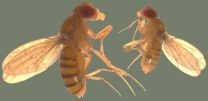(Press-News.org) Managing childhood asthma is difficult. Rather than giving daily medications -- even when children feel well -- many parents treat asthma only when symptoms become severe. This practice can lead to missed school days, trips to the ER and hospitalizations.
But a novel program at Washington University School of Medicine in St. Louis suggests that peer trainers who coach parents over the phone on managing their children's asthma can sharply reduce the number of days the kids experience symptoms. The program also dramatically decreased ER visits and hospitalizations among low-income children with Medicaid insurance.
"We tried a new approach for managing asthma, and it worked," said the study's first author Jane Garbutt, MD, a professor of medicine. "Peer trainers -- moms of kids who had asthma -- provided education and support to parents to enhance care provided by primary care physicians. This additional support helped parents to better manage their child's asthma."
The results of the study are available online in The Journal of Allergy and Clinical Immunology.
Asthma is the most common chronic disease among children. On average, one in 10 children in the United States has asthma. The condition is more common in urban, low-income areas. In the city of St. Louis, one in five children has asthma.
The annual cost of treating asthma in the United States is almost $18 billion, according to the Asthma and Allergy Foundation of America. Garbutt estimated that every dollar spent on this new program for children with Medicaid insurance could save $3 by preventing ER visits and hospitalizations.
Garbutt
The two-year trial evaluated 948 families with children ages 3 to 12 years who had asthma. The families, recruited from 22 pediatric practices, were divided randomly into two groups. In one group, families received usual asthma care from their pediatricians. Families in the other group also received usual asthma care in addition to regular calls from peer trainers over a one-year time frame. On average, each family received 18 calls.
During a series of brief calls, the peer trainers taught parents new skills such as how to give medications effectively, encouraged parents to take their children to primary care physician appointments and provided support to help parents better manage their children's asthma. Parents chose a topic for each conversation, which lasted 10 minutes on average.
After one year of telephone coaching, families in the peer training group reported on average that their children experienced an additional three weeks without asthma symptoms, compared with children in the other group. Children with Medicaid insurance showed a similar reduction in asthma symptoms and had 42 percent fewer ER visits and 62 percent fewer hospitalizations. These reductions lasted through a year of follow- up without any further contact with the peer trainers.
Garbutt said the researchers found out that most parents weren't aware if their children were having asthma symptoms. The study motivated many parents to start a notebook of daily symptoms, talk to their children's teachers and treat their children's asthma daily, as opposed to waiting until symptoms were severe.
"Asthma can cause significant problems for children and their families," said Robert Strunk, MD, professor of pediatrics and the paper's senior author. "The peer-training approach makes so much sense because it can help parents overcome barriers that prevent effective use of medications and other issues that interfere with asthma care. Seeing the outcomes of Dr. Garbutt's study has been gratifying, and I hope that her peer training model can be applied broadly.
Garbutt's goal is to see this model adopted by hospitals or insurance companies. "This is an exciting new approach to chronic disease management, and we would like for it to reach many families," she said. "If implemented on a large scale, I think a program like this can help children with asthma live full, healthy lives."
INFORMATION:
The research was supported by a grant from the National Heart, Lung and Blood Institute of the National Institutes of Health (NIH), HL072919.
Garbutt JM, Yan Y, Highstein G, Strunk RD. A cluster-randomized trial shows telephone peer coaching for parents reduces children's asthma morbidity. The Journal of Allergy and Clinical Immunology. Published online Nov. 4, 2014.
Washington University School of Medicine's 2,100 employed and volunteer faculty physicians also are the medical staff of Barnes-Jewish and St. Louis Children's hospitals. The School of Medicine is one of the leading medical research, teaching and patient-care institutions in the nation, currently ranked sixth in the nation by U.S. News & World Report. Through its affiliations with Barnes-Jewish and St. Louis Children's hospitals, the School of Medicine is linked to BJC HealthCare.
DUBLIN, Ireland, November 14th, 2014 - TB is an infectious disease that kills 1.5 million people each year, and smoking is the biggest driver of the global TB epidemic. Medical scientists at Trinity College Dublin and St James's Hospital in Ireland have unlocked the mechanism underlying the connection between smoking and Tuberculosis (TB). This discovery will considerably strengthen anti-smoking efforts to control TB and uncovers new therapy and vaccine options for TB. Their research has just been published in the top respiratory Journal, the American Journal of Respiratory ...
Philadelphia, PA (November 14, 2014) -- Sleep apnea may accelerate kidney function decline in diabetic patients with kidney disease, according to a study that will be presented at ASN Kidney Week 2014 November 11¬-16 at the Pennsylvania Convention Center in Philadelphia, PA.
Type 2 diabetes often contributes to the development of chronic kidney disease (CKD). Because obstructive sleep apnea is common in patients with type 2 diabetes, investigators wonder whether disordered sleep might play a role in the link between diabetes and kidney dysfunction. To investigate, ...
Philadelphia, PA (November 14, 2014) -- Many young patients with chronic conditions don't take their medications correctly, but 2 new studies point to ways to address such medication non-adherence. The studies will be presented at ASN Kidney Week 2014 November 11¬-16 at the Pennsylvania Convention Center in Philadelphia, PA.
In one study, researchers led by Frederick Kaskel, MD, PhD (Albert Einstein College of Medicine) and Oleh Akchurin, MD (Weill Cornell College of Medicine) looked to see how young patients are using smart phones to help them take their medications. ...
WASHINGTON, Nov. 14, 2014--Quick Response (QR) codes -- the box-shaped symbols that appear on signs, posters, and even business cards -- are a convenient and efficient way of accessing specific web pages with a smartphone or other mobile device. However, new research published today in The Optical Society's (OSA) new high-impact journal Optica, explains how QR codes can do much more.
By adding an array of tiny lenses to an ordinary smartphone, a team of optical engineers from the University of Connecticut has found a way to securely display three-dimensional (3-D) images ...
Researchers at the University of Liverpool have found that screening for Ebola at airports could be an effective method for preventing the spread of the disease into the UK and US, but due to the long incubation period of the virus, screening won't detect all cases.
Published in the Lancet medical journal, the study used a mathematical model to test the probability of infected travellers from West Africa entering the UK and US.
The team, from the University's Institute of Infection and Global Health, examined the current growth rate of the epidemic in West Africa alongside ...
People with bipolar disorder who are being treated with the drug lithium are at risk of acute kidney damage and need careful monitoring, according to new research from the University of East Anglia (UEA) and Norfolk and Suffolk NHS Foundation Trust.
Lithium is a mainstay treatment for bipolar disorder and it is known that the drug can cause a loss of kidney function. The new research establishes the link between short-term exposure to high levels and potential damage to the kidneys.
It is still not known what the impact of more than a single exposure to high levels ...
Scientists from the University of Liverpool have sequenced the mitochondrial genome in glaucoma patients to help further understanding into the genetic basis for the disease.
Glaucoma is a major cause of irreversible blindness, affecting more than 60 million people worldwide, increasing to an estimated 79.6 million people by 2020. It is thought that the condition has genetic origins and many experiments have shown that new sequencing approaches could help understand how the condition develops.
Studies on primary open-angle glaucoma - the most common form of glaucoma ...
Age-related Macular Degeneration (AMD) is the major cause of blindness in the western world, affecting around 50 million people. It has been shown that sufferers are genetically predisposed to develop the condition.
One of the most important risk associated genes is called complement factor H (CFH). This encodes a protein called factor H (FH) that is responsible for protecting our eyes from attack by part of our immune system, called the complement system. FH achieves this by sticking to tissues, and when it is present in sufficient quantities it prevents the complement ...
Animal growth is closely regulated by environmental factors such as nutrition. If the nutrition of a growing animal is limited, growth slows down and the eventual size of the animal remains smaller. Insulin-like signaling plays a key role in coordinating growth in response to dietary status in multicellular animals.
Doctoral student Kiran Hasygar and Assistant Professor Ville Hietakangas from the Department of Biosciences and Institute of Biotechnology, University of Helsinki, Finland, have now uncovered a new regulatory mechanism coordinating animal growth in response ...
Prostate cancer patients carrying inherited mutations in the BRCA genes respond less well to conventional treatment, including surgery and/or radiotherapy - and they also have a lower survival rate than those who are non-carriers of these genetic mutations. Data from the study, which has been published in the journal European Urology, points to the need for new clinical trials aimed at targeting these mutations in order to tailor treatment for these patients.
The study has been led by David Olmos and Elena Castro at the Spanish National Cancer Research Centre (CNIO) ...



